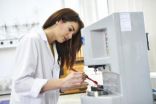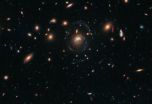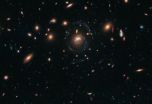(Press-News.org) ROCHESTER, Minn. — The benefits of medical imaging far outweigh the risks when children receive The Right Exam, ordered The Right Way, with The Right Radiation Dose. However, overuse and misuse of imaging change the benefit-risk ratio and Mayo Clinic is leading a collaborative effort to ensure a national protocol is put into action. The commentary, published online in the Journal of Patient Safety, calls for the American College of Radiology, the Joint Commission, the Intersociety Accreditation Commission, and the Centers for Medicare & Medicaid Services to require three safety practices for accreditation of all American hospitals and advanced diagnostic imaging facilities. "No hospital or medical imaging facility in the country should be granted the privilege of imaging children unless it first meets fundamental safe practice performance measures," says Stephen Swensen, M.D., lead author and radiologist, Mayo Clinic.
MULTIMEDIA ALERT: Video and audio are available for download on the Mayo Clinic News Network.
By design, the three, child-centered measures proposed for accreditation that align perfectly with the National Quality Forum Safe Practice for Pediatric Imaging include:
1. The Right Exam - minor head trauma imaging: use of the Pediatric Emergency Care Applied Research Network Clinical Prediction Rule
2. The Right Way - protocols to reduce dual-phase head and chest CT imaging
3. The Right Radiation Dose - use of size-specific pediatric CT imaging protocols
Randall Flick, M.D., Medical Director for Mayo Clinic Children's Center adds, "Establishing these protocols represents a great step forward on the path to safe imaging for children."
"We have the knowledge and the tools today that can substantially improve the safety and quality of care for our children (while also decreasing costs). We have a compelling opportunity to reduce harm for the most susceptible population: our children,"Dr. Swensen concludes.
INFORMATION:
About Mayo Clinic Recognizing 150 years of serving humanity in 2014, Mayo Clinic is a nonprofit worldwide leader in medical care, research and education for people from all walks of life. For more information, visit 150years.mayoclinic.org, http://www.mayoclinic.org/ and newsnetwork.mayoclinic.org.
MEDIA CONTACT:
Rebecca Eisenman, Mayo Clinic Public Affairs, 507-284-5005, newsbureau@mayo.edu
Mayo Clinic calls for standardization of safe imaging protocols for children
2014-07-10
ELSE PRESS RELEASES FROM THIS DATE:
NOAA's GOES-West satellite sees smoke from Canadian fires over US
2014-07-10
NOAA's Geostationary Operational Environmental Satellite or GOES-West satellite spotted smoke over the U.S. Mid-West from dozens of fires raging in Canada's Northwestern Territories.
At 1200 UTC (8 a.m. EDT) on July 9, 2014, GOES-West captured this image of the brownish-colored haze created by forest fires in Canada's Northwest Territories that drifted all the way into South Dakota. This image was created by the NASA GOES Project at NASA Goddard Space Flight Center, Greenbelt, Md.
According to Canada's Natural Resources, Canadian Wildland Fire Information System, fire ...
NASA sees Tropical Storm Neoguri losing punch along southern Japan's coast
2014-07-10
Once a powerful super typhoon, now an weakening tropical storm, NASA's Terra satellite saw a much weaker Tropical Storm Neoguri moving along the southern coast of Japan.
On July 10 at 0:35 UTC, the Moderate Resolution Imaging Spectroradometer (MODIS) instrument aboard NASA's Terra satellite captured an image of a more disorganized Tropical Storm Neoguri over east central Japan. At the time of the image, a more elongated Tropical Storm Neoguri's center was east of Kyushu, Japan.
A visible image from the Visible Infrared Imaging Radiometer Suite (VIIRS) instrument aboard ...
Sun-like stars reveal their ages
2014-07-10
Defining what makes a star "Sun-like" is as difficult as defining what makes a planet "Earth-like." A solar twin should have a temperature, mass, and spectral type similar to our Sun. We also would expect it to be about 4.5 billion years old. However, it is notoriously difficult to measure a star's age so astronomers usually ignore age when deciding if a star counts as "Sun-like."
A new technique for measuring the age of a star using its spin - gyrochronology - is coming into its own. Today astronomers are presenting the gyrochronological ages of 22 Sun-like stars. Before ...
World interest in research work on the benefits of the Okra plant
2014-07-10
Estonian-born Katerina Alba's research at the University of Huddersfield could help to improve the quality of some of the most popular emulsion-based food products – such as butter, mayonnaise, yoghurt and fruit drinks – and she is starting to gain an international profile for her work.
Katerina gained her MSc degree in nutrition and food science at the University and now she has embarked on research for a PhD. Working with her supervisor, Dr Vassilis Kontogiorgos, she is investigating the potential of carbohydrates extracted from the pods of the okra plant. They can ...
Understanding consciousness
2014-07-10
EVANSTON, Ill. --- Why does a relentless stream of subjective experiences normally fill your mind? Maybe that's just one of those mysteries that will always elude us.
Yet, research from Northwestern University suggests that consciousness lies well within the realm of scientific inquiry -- as impossible as that may currently seem. Although scientists have yet to agree on an objective measure to index consciousness, progress has been made with this agenda in several labs around the world.
"The debate about the neural basis of consciousness rages because there is no widely ...
Bacterial colonization prior to catching the flu may protect against severe illness
2014-07-10
Many studies have shown that more severe illness and even death are likely to result if you develop a secondary respiratory infection after developing influenza. Now, however, a team of researchers based at The Wistar Institute has determined that if you reverse the order of infection, the bacteria Streptococcus pneumoniae (often called pneumococcus) may actually protect against a bad case of the flu.
The researchers discovered that the bacterial protein pneumolysin, which is described as a bacterial virulence factor, might protect macrophages—a type of immune system ...
What's a concussion? Review identifies four evidence-based indicators
2014-07-10
(July 10, 2014) – A research review identifying the clinical indicators most strongly associated with concussion is an important first step in the process of developing evidence-based guidelines for concussion diagnosis, prognosis, and treatment, according to a new report published by Neurosurgery, official journal of the Congress of Neurological Surgeons. The journal is published by Lippincott Williams & Wilkins, a part of Wolters Kluwer Health.
Based on analysis of the best available research data, a multidisciplinary panel of experts has identified a set of four ...
For children with pacemakers, 'self-competence' affects quality of life
2014-07-10
July 10,2014 – For children and teens living with a cardiac pacemaker, a low sense of self-competence seems to contribute to decreased quality of life, reports a study in the July Journal of Developmental & Behavioral Pediatrics, the official journal of the Society for Developmental and Behavioral Pediatrics. The journal is published by Lippincott Williams & Wilkins, a part of Wolters Kluwer Health.
"Self-competence may function as a protective factor against lower health-related quality of life in children with pacemakers," according to the study by Ana M. Gutierrez-Colina ...
Merging galaxies and droplets of starbirth
2014-07-10
The Universe is filled with objects springing to life, evolving and dying explosive deaths. This new image from the NASA/ESA Hubble Space Telescope captures a snapshot of some of this cosmic movement. Embedded within the egg-shaped blue ring at the centre of the frame are two galaxies. These galaxies have been found to be merging into one and a "chain" of young stellar superclusters are seen winding around the galaxies' nuclei.
At the centre of this image lie two elliptical galaxies, part of a galaxy cluster known as[HGO2008]SDSS J1531+3414, which have strayed into each ...
Diving for pearls with the Hubble Space Telescope
2014-07-10
Stars forming like a string of blue pearls along two elliptical galaxies could be the result of a galactic merger, according to an international team of astronomers. The structure could reveal rare insights about elliptical galaxies.
Scientists from Rochester Institute of Technology helped analyze data from the Hubble Space Telescope showing elliptical galaxies coalescing at the core of a dense galaxy cluster. The study is part of a program sponsored by the Hubble Space Telescope—an international cooperation between NASA and the European Space Agency—to look inside 23 ...





